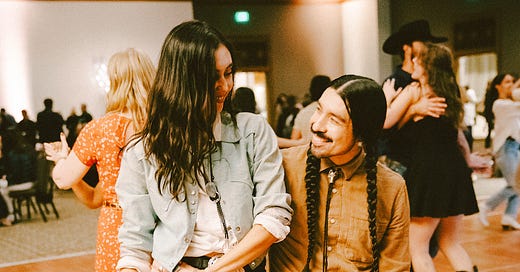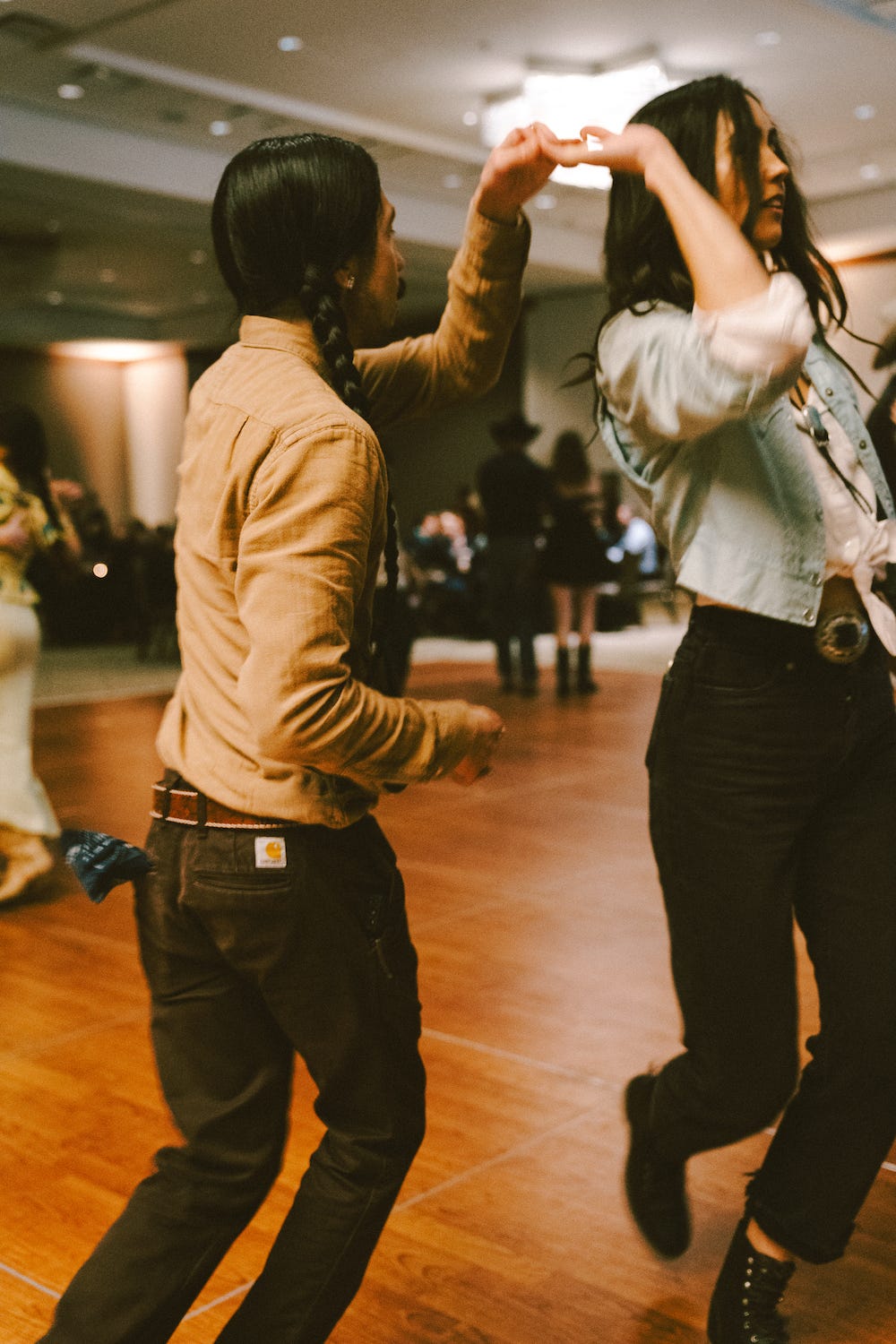All Photos in this post by Lyza Renee (@lyzarenee00)
Dear sisters,
I’ve never had a thing for Country music, the bar scene, or dancing, but somehow, last October, I found myself in a Honky Tonk Bar, and I instantly fell in love with two-step dancing.
After that night at the Honky Tonk, I started taking all different styles of partnered-dance lessons. I tried salsa, zouk, bachata, tango, and two-step. I had multiple dance partners with whom I practiced regularly, as well as three private dance teachers. I went out social dancing four or five nights a week. In the dance community, this initial part of the dance journey is called “catching the ‘dance ’bug.”
I’ve now been dancing for about nine months. I am finally feeling comfortable on the dance floor and much more confident too! I would love to share my top tips with you about how to get started in partner dancing!
#1. Find a private instructor.
You can take group classes or weekend workshops to learn a new dance, but I highly recommend hiring a private dance teacher. There is nothing more beneficial than having one-on-one attention from a talented and qualified teacher to cut your learning curve in half. There are many activities and skills one can learn online, but partner dancing is best learned in person with an expert. My local dance teacher is Eric Moreno, and here is his instagram handle, @nativetexantwostep should you ever find yourself in Austin wanting to try out a dance lesson.
#2. Take videos of yourself dancing and watch them back.
This tip was really the game changer for me. It’s very easy to think that you look amazing when you first start out. (And I’m so happy that you are thinking that you look awesome, because you ARE awesome!) But even though you look like you are having a great time, and that’s wonderful, if you want to improve as a technical dancer, it is essential to record yourself, play it back, and see what you actually look like.
This is when my dance really started to improve. For example, I would think that I was moving my hips dramatically, and as I watched playback, I would see that they were hardly swinging at all. You will get to see little details like this, which will help you start to pay attention to the nuances as you advance in your dance.
#3. Find a dancer that you admire, and emulate what you see.
There will be a dancer that catches your eye. It may be a beautiful woman, graceful and elegant, executing perfect spins, moving about the room light as a feather. Or it may be a Lead dancer with perfect posture and a quiet confidence, expertly and effortlessly “leading” a “follow” with a flick of the wrist. (The “lead” is the person dancing who is choosing what moves are happening. He is “leading” the dance. The “follow” is the dance partner, who receives the cue and executes the movement the lead suggests.)
When you notice a dancer that you really enjoy, figure out what exactly it is that you like about them. Do they have great footwork? Are all of their steps precise and on beat? Do you like their posture? Do you admire the way they style their arms and hands?
Then practice emulating what you see and trying on a new flavor.
#4 Use the mirrors
This took me a long time to figure out. When you are first starting out, it may feel a little intimidating to look up and see how you are doing in the mirrors that are generally available in any dance studio. You might feel uncomfortable or embarrassed, but the sooner you can get over that hump, the better. Most new dancers don’t have a lot of experience with body awareness. So, very similarly to the “take videos of yourself tip,” this tip allows for you to actually see what you look like and make adjustments in real time.
#5 Don’t rely on your partner for balance
Because partnered dance is a dance where you are mostly physically attatched to your partner by holding hands, it’s very easy for most newbie “follows” to rely on their “leads” for balance and to “carry the weight of the dance.” My teacher patiently instructed me not to rely on his hands for balance and to learn how to hold up my body on my won. One time, one of my Zouk teacher’s literally stop our lesson to apply hand cream to his hands so that I wouldn’t hold them as tightly.
The main reason that partnered dancing works is through the communication of hands and body language, but this kind of connection should only be used as a subtle indicator of cues to be followed. I like to try and imagine that even if my partner wasn’t there, the dance would still be moving and flowing, because I’m carrying my half of the dance 100%.
#6 Practice on your own too.
It’s easy to fall into the habit of not practicing on your own. It’s a partner dance, so shouldn’t you only be practicing on the dance floor with your partner? No. You should definitely be practicing on your own. Right now I’m working on footwork and timing, keeping my balance during spins, and spinning as I’m rotating. In an actual dance, I’d be rotating around my partner. At home, I use a chair to take his place. There are many, many movements that you can and should practice on your own.
#7 Connect with your partner
I love asking dancers what their favorite and least favorite things are about dance partners. The response that I receive most often generally has little to do with the technical skill of the dance partner.
What I hear is, “I love dancing with partners who are connecting with me, who make eye contact every now and again, who are listening to my cues and body language, who feel in sync.” So, if you remember only one thing from this post, I hope you remember this: the most important thing about partnered-dancing is to connect with your partner who you are sharing the experience with and enjoy the dance.
XOX,
With all my love,
Meg







Thanks for the tips, Meg! Glad you are having a great time. I have family in Texas. Maybe one day I can visit and you can show me how it's done! 🕺🏻💃🏻
I'm so glad you wrote about this! I hope one day Eric can show me some moves! Thanks Meg.